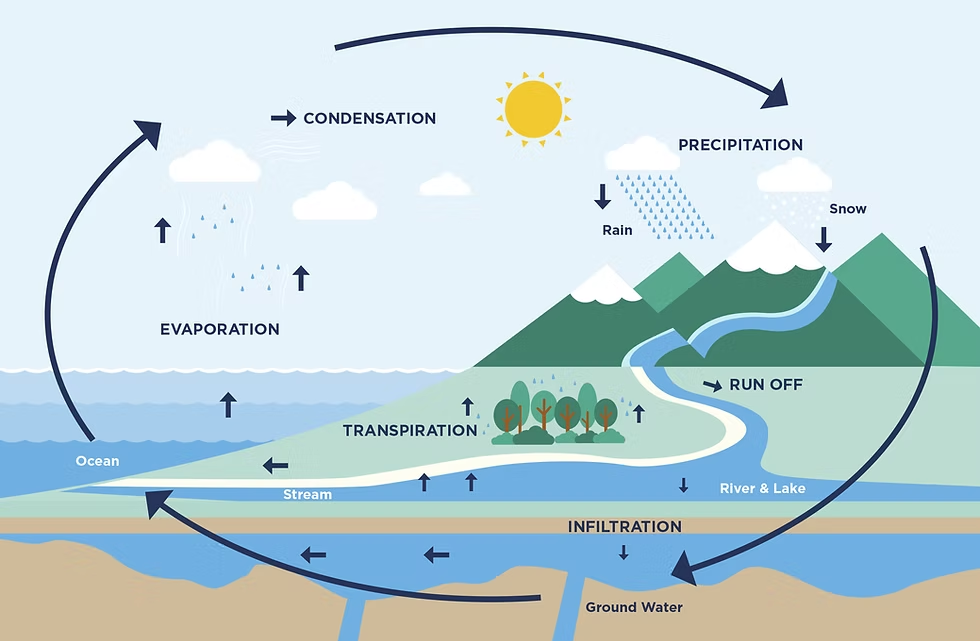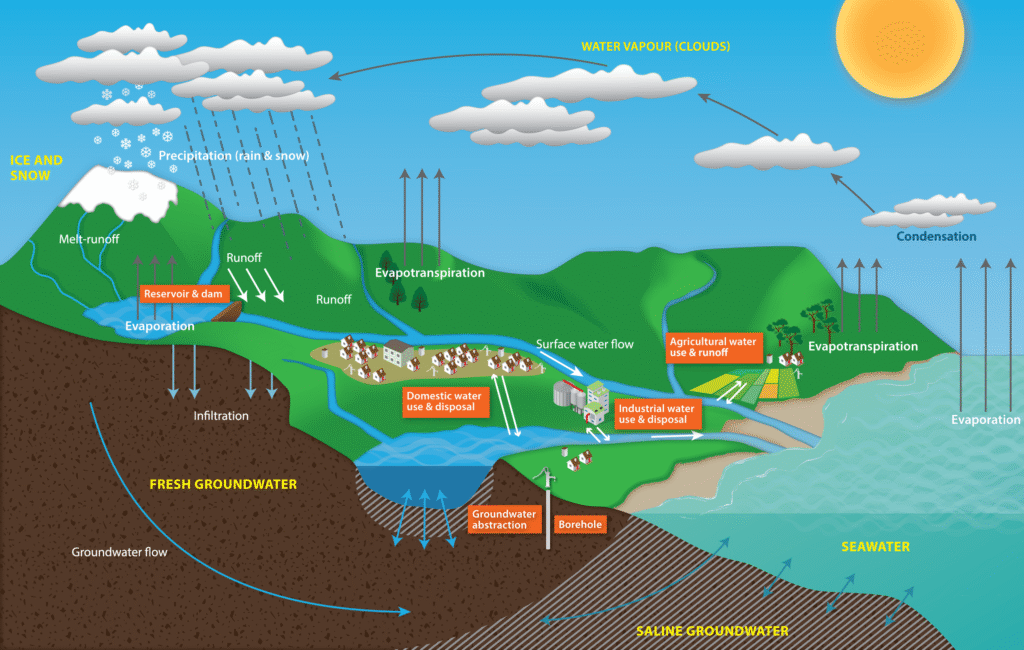Now Reading: How Water Disappears and Returns: Nature’s Secret Life Cycle 2025
-
01
How Water Disappears and Returns: Nature’s Secret Life Cycle 2025
How Water Disappears and Returns: Nature’s Secret Life Cycle 2025

Table of Contents
Water is the lifeline of our planet. From the oceans to the clouds and back again, water is always moving through a cycle called the water cycle. This endless journey of water is what makes life on Earth possible. One of the most important parts of this cycle is the change from evaporation to condensation. These two simple words explain how water leaves the Earth’s surface, travels through the air, and returns as rain or snow.
In this article, let’s explore how evaporation and condensation work, why they are so important, and how climate change could affect them.
What Is the Water Cycle?

The water cycle is nature’s way of moving water around the planet. The sun heats up water in lakes, rivers, and oceans, turning it into water vapor. This water vapor rises into the air, forms clouds, and then falls back to the ground as rain, snow, or hail. After this, water returns to rivers, lakes, and oceans, and the cycle begins again.
Scientists call the main parts of this cycle evaporation, condensation, precipitation, and collection. But the focus here is on the first two steps: evaporation and condensation, which work together to keep fresh water flowing on Earth.
Step 1: Evaporation — Turning Liquid into Gas
Evaporation happens when the sun heats water on Earth’s surface. When the water gets warm enough, it turns into a gas called water vapor. This vapor is so light that it rises into the air. You can see a small version of this at home when water boils and steam forms.
Evaporation is not only happening in oceans but also in lakes, rivers, and even in soil and plants. In fact, water leaves plants through a special process called transpiration, which is like plant evaporation. Together, evaporation and transpiration are sometimes called evapotranspiration.
Fun fact: every year, about 505,000 cubic kilometers of water evaporates from the surface of the Earth! That is enough to fill millions of Olympic-sized swimming pools.
Step 2: Condensation — Turning Gas Back into Liquid
Once water vapor reaches cooler air higher in the sky, it starts to cool down. When water vapor cools, it turns back into tiny drops of liquid water. This process is called condensation. Those drops of water gather together to form clouds.
You can see condensation at home, too. When you breathe on a cold mirror, your warm breath turns into water droplets on the glass. That’s condensation in action.
In the atmosphere, billions of tiny droplets come together to make clouds. When these droplets grow larger and heavier, they fall back to the Earth as rain or snow, starting the whole cycle again.
Why Evaporation and Condensation Matter
Evaporation and condensation are not just science terms; they are vital for life. Here is why:
Freshwater supply: Without evaporation, we would not have clouds, and without clouds, there would be no rain to give us fresh water.
Climate balance: Evaporation helps cool down the Earth’s surface, while condensation releases heat in the atmosphere. This keeps temperatures from becoming too extreme.
Farming and food: Farmers rely on rainfall, which comes from condensation, to grow food. A healthy water cycle is key to feeding billions of people.
Energy and weather: The energy exchanged during evaporation and condensation drives weather patterns, including winds, storms, and even hurricanes.
In other words, if evaporation and condensation stopped, life on Earth would quickly come to an end.
How Climate Change Affects Evaporation and Condensation
Today, scientists are worried that climate change is disturbing the water cycle. When the planet warms, evaporation happens faster. Warmer air can also hold more water vapor, which changes how clouds form.
This can lead to problems like:
Droughts — Too much evaporation and not enough rainfall dry out rivers, lakes, and farmland.
Flooding — Warmer air can hold more water, which can suddenly pour down in extreme storms, flooding entire towns.
Unpredictable weather — Changing evaporation and condensation patterns make weather harder to predict, which hurts farming and water planning.
In the future, scientists say we will need to understand these changes better to manage water resources and protect people from extreme weather.
Amazing Facts About the Water Cycle
One drop of water you drink today might have once been inside a dinosaur millions of years ago, thanks to the water cycle!
About 90% of the moisture in the air comes from evaporation from oceans.
Without clouds formed by condensation, the Earth would be much hotter during the day and freezing cold at night.
How Can We Help the Water Cycle?

Everyone can do their part to keep the water cycle healthy:
Save water at home by turning off taps and fixing leaks.
Plant more trees, because they release water through transpiration, helping clouds to form.
Protect wetlands, which store water and release it slowly back to nature.
Cut carbon pollution by using clean energy, which helps stop global warming from disturbing evaporation and condensation.
By taking these steps, we can help nature keep its perfect balance.
Final Thoughts
From a drop of water rising from the ocean to the raindrop that falls on your garden, the water cycle is a wonder of nature. Evaporation and condensation are two key steps in this endless journey, giving us fresh water, healthy weather, and a livable planet.
As climate change brings new challenges, understanding the water cycle becomes more important than ever. After all, water connects us all — from clouds in the sky to the rivers on the ground.
Read More:- Deyaar’s Latest Announcement Shakes Up the UAE Property Market






















